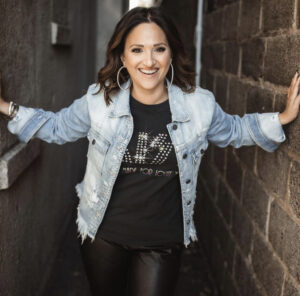

Melissa Berry aka Cancer Fashionista recently interviewed Rachel Beller, Founder of Beller Nutrition. Rachel is a weight loss and oncology nutritionist, as well as a Registered Dietitian Nutritionist (RDN).
Rachel is also a spokesperson for the American Cancer Society, and three-time bestselling author who frequently appears in the media including Good Morning America, Dr. Oz, CNN, ABC World News Tonight, Rachael Ray and The Biggest Loser.
Melissa was recently a part of Rachel’s Transformation Nutrition Masterclass and loved it! It’s great for those seeking a high level of nutritional support at an affordable price. The magic is that members receive daily personal ‘hands-on’ help from Rachel and her team. Plus, it connects members with a group of like-minded women who share similar goals. See below for more information and a special discount.
Melissa spoke with Rachel about power spicing, fiber and alcohol consumption as it relates to breast cancer. Read on below to find out more!
Q. What is Power Spicing and how does it relate to breast cancer and prevention?
Spices are some of the highest antioxidant content foods out there, even higher than berries, chocolate andred wine. Ounce for ounce, spices provide up to 10x the antioxidants of nuts and seeds. There are hundreds ofstudies about the anti-cancer properties of spices.
In fact, I found a research study published in the Nutrition Journal (2010) that analyzed the antioxidant contentof 3100 foods. That study found that spices are some of the highest foods in antioxidant content.
Using this study, I calculated the approximate antioxidant values in my Power Spicing blends.
I found that just a teaspoon or so of the blends can make a BIG difference in the antioxidant value of yourmeals.
When used together certain spices can boost each other’s powerful nutritional effects. With just a pinch, youcan dramatically double or even triple the nutritional power of your meals. It’s what I call “spice synergy”. Foryears, I’ve suggested various spice blends to my clients. In response people would tell me, “Rachel, it’s such ahassle to find quality organic spices and remember the right way to combine them. Can’t you make them forus?” Thus, Power Spicing was born. My team and I spent years crafting unique spice nutrition blends, testingdifferent combos to deliver nutritional spice synergy and irresistible flavors while using clean, organicingredients.
Q. What is the importance of fiber and how does it relate to breast cancer and prevention?
Fiber is often passed up as a dull, boring topic, but this important component of plant foods is actuallyessential for breast health. I recommend 30-35 gm of fiber per day! There are so many reasons why but here are just two ways:
- Balances your hormones and reduces excess estrogen
- Nourishes your gut microbiome
Fiber balances your hormones and reduces excess estrogen. Elevated estrogen levels are linked to higherbreast cancer risk, so fiber is like a natural detox for your gut. It scrubs and releases excess estrogen (think: insoluble fiber = brush). It then binds to excess estrogen and helps shuttle it out of your body (think soluble fiber= sponge), resulting in lower estrogen levels.
A study found that women on a plant based diet (high fiber ~28 gm/d) had 15-20% lower blood estrogen levelsand 3x the amount of estrogen excreted in their stool compared to women on a Standard western diet (lowfiber, 12 gm/d)
Fiber also nourishes your gut microbiome. There are trillions of bacteria in your GI tract. Prebiotic fibers are thefuel for your gut microbiome, the good-for-you bacteria use the fiber as food. The bacteria digest the fiber anduse it for energy and healthy growth.
A healthy gut microbiome in turn enhances immunity, helps with weight loss, reduces inflammation…and mayreduce breast cancer risk.
Women with breast cancer have been shown to have dysbiosis–a dysregulated, poorly populated gutmicrobiome.
Here’s an analogy. If you think of your gut microbiome as a garden, you want to give the garden fertilizer tohelp it grow. Likewise, you want to feed your gut bacteria “garden” with prebiotic fibers to “fertilize it” which willhelp the gut “garden” flourish. If you don’t feed your garden, it becomes unhealthy and sparse. Likewise, if youdon’t eat prebiotic fibers to nourish your microbiome, the good bacteria starve and die off.
We used to just recommend “get your 35 grams of fiber per day,” but now we’re learning more and havelearned that diversification of the TYPES of fiber is key. There are two types of fiber: insoluble fiber and solublefiber. You want some of both. Within soluble fibers there are special types called prebiotic fibers. And withinthat category of prebiotics are an extra special type called beta glucans—ALL support breast health.
One of my tricks of the trade: FIBER BOOSTERS: immediately increase the fiber content of your meal by 5 grams!
- Psyllium – 70% soluble, 30% insoluble — good for regularity!
- Chia (whole and ground) – soluble fiber, prebiotic
- Flaxseed – lignans (plant phytoestrogen) which are associated with lowered risk of breast cancer
Bottom line, I prescribe 30-35 gm of fiber per day. Even though fiber has been shown to be so important, it’sbeen shown that only 3% of Americans get enough fiber
There have been studies that have looked at women eating 20 gm fiber/day compared to 30-35 gm…there isa difference in breast cancer risk!
Q. What are the do’s and don’ts of alcohol as it relates to breast cancer and prevention?
The American Institute for Cancer Research recommends minimizing alcohol intake–for optimal breastcancer prevention, it’s best not to drink alcohol. This is because your body breaks down alcohol into a chemicalcalled acetaldehyde.
Acetaldehyde damages your DNA and prevents your body from repairing that damage…this can cause issueswith cellular growth and function which can lead to cancer development.
Even less than one drink per day increases risk for breast cancer–and it’s recommended that women at highrisk should consider not drinking at all.
What about antioxidants from red wine? Consider that cacao powder has more than twice the amount ofpolyphenols (aka plant-based antioxidants) compared to red wine. Wine definitely isn’t the highest source ofantioxidants out there–you’re getting a bigger bang for your buck with spices and herbs.
What do I recommend? Don’t go for beverages that will harm you. Instead, opt for ones that will help decreaserisk such as my signature tonics made with top cancer-fighting ingredients.
Thank you Rachel for your incredible insight and suggestions! To join the next Beller Nutrition Masterclass starting on May 1st, simply visit https://www.bellernutrition.com/transformation-masterclass/
to sign up. Enter AIRS20 to receive 20% off at checkout.

